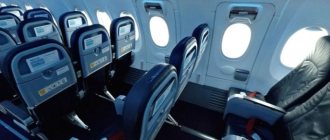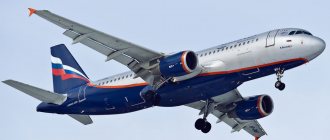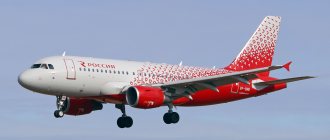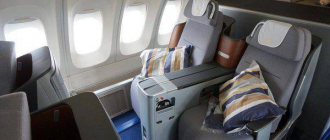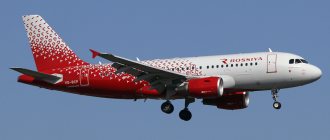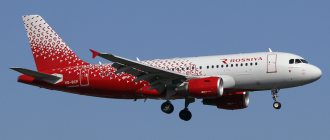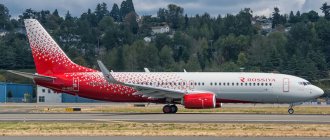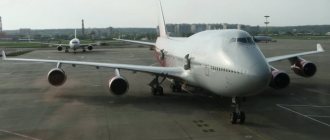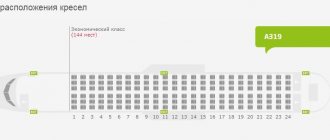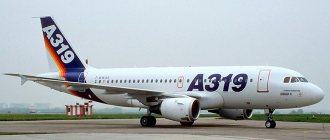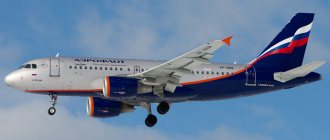When traveling to distant countries, passengers often fly on a Boeing 767-300. We will describe the layout of the cabin and try to choose the best places to make the trip as enjoyable as possible. After all, the comfort and convenience during the journey will depend on which chair you take.
Today there is a huge selection of airliners used by various companies. Each model has its own layout options. Also note that sometimes different carriers divide the cabin differently, which will be reflected in the location of specific seats. In order not to make a bad choice when checking in for a flight, it is better to familiarize yourself with all the features of the airliner in advance.
general description
The Boeing 767-300 is a wide-body aircraft. This is a more advanced model of the previous version (767-200). In this modification, the developers managed to make the structure a little longer in size, which helps not only to install more seats in the cabin, but also to achieve better comfort for each passenger, even those sitting in economy class.
gta5-mods.com
If we talk about technical characteristics, the Boeing 767-300 is distinguished by the following indicators:
- The wingspan reaches 49 m.
- Flight speed is about 800 km/h.
- The length of the side is almost 55 m, which is half a meter more than the previous model.
- The maximum flight range is 11 thousand meters.
- Capacity – from 224 to 336 people, depending on the cabin layout.
The development of this modification of the airliner began back in 1981. The designers improved fuel supply compared to the previous version, increased ease of control, improved sound insulation, and installed the latest electronic flight control system at that time. Also, one of the innovations concerned the materials used for the body. In this case, we decided to add aluminum ore and polymer mixtures to the overall alloy.
For passengers, the main difference between the Boeing 767-300 and other similar aircraft is increased comfort, since the distance between the seats, even in economy class, has increased.
This type of airliner has been actively used since 1986 after a series of successful trials and tests. Japanese airlines JAL were the first to use it. Today, the Boeing 767-300 is in the fleet of many international and domestic companies.
Among them are Pegas Fly, Azur Air, Royal Flight, Nordwind Airlines, S7, Ural Airlines, Delta Air Lines", "Austrian Airlines", "American Airlines", "Air Canada", "Air New Zealand", "British Airways". And only Aeroflot and Rossiya took them out of service relatively recently.
Such aircraft are used for long-distance flights, for example, when traveling to Thailand, Vietnam, the Dominican Republic, India, Spain, Cambodia, Sri Lanka, the Maldives, and the Seychelles. And since such flights take so long, you should carefully select your seat on board to ensure you have the opportunity to relax or even sleep during the flight.
The history of the Boeing 767 aircraft
The concept of the birth of the Boeing 767 did not appear immediately; it was preceded by a number of events.
February 9, 1969 - the Boeing 747 took off for the first time, the first wide-body aircraft with a 6-meter cabin, with two aisles between the rows, which in the USA became known as “Twin-aisle aircraft”. Before it, the maximum cabin width reached only 4 meters. But the 747 did not remain the only one of its kind for long; it soon had competitors:
- August 29, 1970 and November 16, 1970 - the American McDonnell Douglas DC-10-30 and Lockheed L-1011 TriStar took off;
- October 28, 1972 - the European Airbus A300 began flying;
- December 22, 1976 - the Soviet IL-86 saw the sky.
All of the listed aircraft competed with the Boeing 747, but only the Europeans had a clear advantage, despite numerous technical “gaps”. Their airbus was twin-engine, which meant it was more economical in kerosene consumption and cheaper to maintain, which could not but spur the flagship aircraft manufacturer to new developments.
See also the article Airbus Il-96 and its technical characteristics
The European Airbus was twin-engine.
1972 - Boeing created a working group on the project with the index “7X7”, whose task was to study the possibility of replacing the obsolete Boeing 707 with a modern airliner. The problem was that the 747 had been heavily invested in, so the new project required outside funding.
The Americans teamed up with the Italian airline Aeritalia and the Japanese consortium CTDC, which included Fuji, Kawasaki and Mitsubishi.
A large international project was created, in which the invited partners made partial investments, bore the same risks as Boeing, and at the same time became the main contractors of the company.
1976 - preparatory work was completed, it was decided that the aircraft would have a classic single-tail tail and two engines, although an additional option with three engines was initially considered.
January 1978 - a site was selected for the production of a new aircraft; it became a plant in the city of Everett.
, city of Everett
February 1978 - the index “7Х7” was changed to “767” and it was proposed to launch three variants of the aircraft into design:
- 767-100 for 190 passengers - was later declared unprofitable;
- 767-200 for 210 passengers - brought to life;
- 767MR/LR with 200 passengers and three engines, later renamed "777".
, 1978 — the official design of the aircraft began, and automated systems were used for the first time.
July 1978 - assembly of the first copy began.
August 4, 1981 - Assembly of the Boeing 767 was completed, the board was assigned the number N767BA.
, 1981 - the first flight was carried out, by this time there were already orders for 173 aircraft from 17 airlines.
September 1981 - July 1982 — five more vehicles were manufactured and tested during this period.
July 1982 - The US Federal Aviation Administration issued a certificate for the 767th Boeing.
, 1982 — United Airlines, the customer airline, received its first Boeing 767.
Boeing 767-200
Interior layout
It is worth noting that the Boeing 767-300 model has several modifications that differ in minor details. So, if the letters ER (Extended Range) were added to the name, this indicates an increased flight range and more seats in the cabin. It is believed that this is the most successful model, which can only be competed by the Airbus A330-200. The designation F indicates a cargo ship.
turproezdka.ru
Among the passenger airliners of this model there may be the following modifications: VP-BDI, VP-BOY, VP-BOZ, VP-BMC, VQ-BTQ, VQ-BOG, VP-BLC, VP-BLG, VP-BRE. Therefore, in order to find out which seat is best to take before check-in, it is worth checking the cabin layout of a particular aircraft.
So, on board the VP-BDI there are 47 rows, divided into three equal sectors, but there is no business class. There are only five toilets in the cabin. The airliner layouts of the VP-BOY and VP-BOZ variations are designed for 42 rows, with separate seats for increased comfort. On board the VP-BMC, VP-BOG and VQ-BTQ aircraft there are much fewer seats - only 39 total rows. The economy sector is divided into two halls.
The standard layout of the Boeing 767-300 involves the following options:
- The seats are installed according to the 2X3X2 system, although in some variations there are also 2X4X2, and business class usually has a 2X2X2 layout, which increases the free space in the aisle.
- In most airlines, the cabin is divided into two classes - business and economy, where 12 seats are allocated for the first, and 278-288 for the budget section.
- Charter airlines prefer mono-cabins, where 336 seats are located at once.
- There are seven toilets on board - one at the beginning, two in the middle of the cabin and four at the end.
- The distance between the seats reaches 57 cm in a regular room and 105 cm in the comfort zone.
Design
When creating the Boeing 767, the designers used the latest technological developments in the field of aircraft construction, as a result of which the airliner received:
- two dual-circuit turbofan engines, which reduced fuel costs;
- digital flight control systems;
- improved wing aerodynamics: the span was increased and the sweep was optimized;
- low noise level;
- lightweight manufacturing materials: composites and aluminum alloys, which lightened the weight of the Boeing 767 and made it possible to carry out regional flights.
An innovation of the Boeing 767 was the “glass” cabin.
Facilitated navigation and control of the vessel, which made it possible to eliminate the need for a flight engineer and allowed the formation of a crew of two pilots. Customers perceived this with caution, and at first the company, as an additional option, offered a cabin designed for three people.
This state of affairs lasted for about two years, then the issue was studied by a government commission, which proved that the Boeing 767 could be piloted by two people. Demand for airliners has increased, which was facilitated by the fact that after the expansion of ETOPS standards, routes over the Atlantic opened for them.
The best and worst places
To find out which seat is worth taking during the flight, you need to read reviews from tourists and decide what is preferable for you. So, for some, the comfort of placing their legs is important, for others, the ability to hang a baby cradle is important, and still others want to sleep in silence all the way. For each option, you need to choose a more suitable location relative to the main goal.
airlines-inform.ru
Almost all the seats in the Boeing 767-300 cabin are comfortable, since a fairly comfortable distance is initially provided between them. But it is worth remembering some features of each of them:
- Side seats are preferable for couples traveling together, then you won’t have to fight for the porthole, disturb your neighbors when going to the toilet, and you can isolate yourself at least a little from others while having quiet conversations or leaning on each other in your sleep.
- A seat near the windows is also chosen by those who want to enjoy the view from the window or want to sleep the entire trip.
- Aisle seats are only useful if you need to get up frequently while traveling, for example, they are preferred by passengers with children who do not want to sit still, but then you will often be lifted up by neighbors who want to go to the toilet or by people passing by.
- Middle seats are considered less comfortable due to the limited number of armrests and the need to disturb other passengers if you need to stand up.
- Additional legroom can be found in the first row, as well as in rows 14 (C, D, F), 16 (A, B, G, H), 32 (C, D, E, F) and 33 (A, B, G, H), but passengers with children, animals or disabled people will not be seated here, since this is an emergency exit area.
- But the places in the 11th and 27th are considered not very good due to the proximity of the bathrooms, people are constantly queuing here, and excessive noise is also a nuisance.
- As with most other airliners, the tail of the plane is considered less comfortable to sit in, as the engines and turbulence are more noticeable here.
- In the 24th, 25th and 38th rows, the seat backs do not fully recline, which will limit your ability to relax, and during a long trip this is one of the important factors.
- The space for hand luggage has also been reduced here, and if you don’t have enough space for your bag, you will have to place it at your feet, which will further limit your freedom, which will affect your comfort during the flight.
- Remember that lunch distribution starts from the front rows in each block, so if you want a wider selection of available dishes, it is better to sit at the front of the cabin.
- All business class seats offer increased comfort, not only due to the increased space between the seats, but also thanks to the additional services offered on board (sleep masks, chargers for gadgets, entertainment, pillows, blankets).
Depending on the interior layout, the number of rows may vary slightly. Therefore, pay attention to the diagram and do not choose the seats installed at the end of each compartment, since the backrests there do not recline completely. Also, bathrooms are most often installed between the main partitions, the proximity to which will prevent you from sleeping or working on the road.
Specifications
- The Boeing 767 is a twin-engine turbofan low-wing aircraft with swept wings and single-fin tails.
- Fuel consumption - 4800 kg per hour at maximum commercial load.
| 767-200 | 767-200ER | 767-300 | 767-300ER | 767-300F | 767-400ER | |
| Length | 48.51 m | 54.94 m | 61.4 m | |||
| Wingspan | 47.57 m | 51.9 m | ||||
| Passenger capacity, people | from 181 to 255 | from 218 to 350 | — | from 245 to 375 | ||
| Cargo | 81.4 m³ | 106.8 m³ | 454 m³ | 129.6 m³ | ||
| Max. take-off weight | 142,880 kg | 179 170 kg | 158,760 kg | 186,880 kg | 186,880 kg | 204 120 kg |
| Empty mass | 80 130 kg | 82,380 kg | 86,070 kg | 90,010 kg | 86,180 kg | 103,870 kg |
| Range | 9,400 km | 12,200 km | 9,700 km | 11,305 km | 6,050 km | 10,450 km |
| Cruising speed | M=0.80 (851 km/h) | |||||
| Engines | Two turbofan engines; Typically used are the General Electric CF6-80A, (early 767-200 and 767-300 except ER) or General Electric CF6-80C2 (typically 65,000 lbf), or Pratt & Whitney PW4062 (typically 63,000 lbf); use of Rolls engines is very limited -Royce RB211 (typically 60,000 lbf) | |||||
Aircraft operation
The model had virtually no problems with commissioning. For example, during the entire first year of use of the airliner, 96.1% of aircraft took off and landed without delays due to technical reasons. The efficiency and comfort of the airliners perfectly met the requirements of the airlines. Following changes in air safety rules (ETOPS), which allowed twin-engine aircraft to fly on routes where the distance from the nearest emergency landing airfield should not exceed 120 minutes of flight time (previously this value was 90 minutes), sales of the Boeing 767-300 increased. The machine was used especially intensively on transatlantic lines.
The described aircraft, like other modifications of this model, is popular among Russian airlines; the ability to transport a large number of passengers on charter flights is especially valued.
Military modifications
Based on the 767-300F model, the following variants of military aircraft were developed by order of the US Air Force, but did not go into production:
- universal medium military transport aircraft
- tanker aircraft
- long-range radar detection and control aircraft (2 vehicles for the Japanese Air Self-Defense Force)
- combat control and target designation aircraft (1 aircraft for the US Air Force)
For these purposes, appropriate changes were made to the design of the 767-300F to accommodate the corresponding equipment or electronic equipment, or vice versa, to free up space for the transportation of military cargo.
Literature
- Becher, Thomas.
Boeing 757 and 767. - Marlborough, Wiltshire: Crowood Press, 1999. - ISBN 1-86126-197-7. - Birtles, Philip.
Modern Civil Aircraft: 6, Boeing 757/767/777.
3rd ed.
. - London: Ian Allen Publishing, 1999. - ISBN 0-7110-2665-3. - Davies, REG (2000), TWA: an airline and its aircraft
, McLean, Virginia: Paladwr Press, ISBN 1-888962-16-X - The Complete Encyclopedia of World Aircraft. - New York, NY: Barnes & Noble Books, 1997. - ISBN 0-7607-0592-5.
- Eden, Paul.
Civil Aircraft Today: The World's Most Successful Commercial Aircraft. - Silverdale, Washington: Amber Books Ltd, 2008. - ISBN 1-84509-324-0. - Frawley, Gerard (2001), The International Directory of Civil Aircraft
, Weston Creek, Australian Capital Territory: Aerospace Publications, ISBN 1-875671-52-8 - Haenggi, Michael.
767 Transatlantic Titan.
“Boeing Widebodies” series
. - Osceola, Wisconsin: Motorbooks International, 2003. - ISBN 0-7603-0842-X. - Kane, Robert M. (2003), Air Transportation 1903–2003.
14th ed.'
, Dubuque, Iowa: Kendall Hunt Publishing, ISBN 978-0-7872-8881-5 - Norris, Guy & Wagner, Mark (1996), Boeing Jetliners
, Osceola, Wisconsin: MBI Publishing, ISBN 0-7603-0034-8 - Norris, Guy & Wagner, Mark (1998), Boeing
, Osceola, Wisconsin: MBI Publishing, ISBN 0-7603-0497-1 - Norris, Guy & Wagner, Mark (1999), “767: Stretching and Growing”, Modern Boeing Jetliners
, Osceola, Wisconsin: Zenith Imprint, ISBN 0-7603-0717-2 - Norris, Guy & Wagner, Mark (2001), Boeing 777, The Technological Marvel
, Osceola, Wisconsin: Zenith Press, ISBN 0-7603-0890-X - Norris, Guy & Wagner, Mark (2009), Boeing 787 Dreamliner
, Osceola, Wisconsin: Zenith Press, ISBN 978-0-7603-2815-6 - Shaw, Robbie.
Boeing 757 & 767, Medium Twins. - Reading, Pennsylvania: Osprey Publishing, 1999. - ISBN 1-85532-903-4. - Smil, Vaclav.
Transforming the Twentieth Century: Technical Innovations and Their Consequences. - Oxford, Oxfordshire: Oxford University Press, 1998. - ISBN 0-19-516875-5. - Sutter, Joe.
747: Creating the World's First Jumbo Jet and Other Adventures from a Life in Aviation. - Washington, DC: Smithsonian Books, 2006. - ISBN 0-06-088241-7. - Jane's All the World's Aircraft 1989–90. - London: Jane's Yearbooks, 1989. - ISBN 0-7106-0896-9.
- Wells, Alexander T. & Rodrigues, Clarence C. (2004), Commercial Aviation Safety
, New York, NY: McGraw-Hill Professional, ISBN 0-07-141742-7 - Wilson, Stewart.
Ansett: The Story of the Rise and Fall of Ansett, 1936–2002. - Weston Creek, Australian Capital Territory: Aerospace Publications, 2002. - ISBN 978-1-875671-57-1.
Notes
- ↑. Boeing. Retrieved August 8, 2012.
- ↑
- ↑, pp. 104–05
- ↑. American Airlines (2011). Retrieved August 28, 2011.
- . Continental Airlines (2011). Retrieved August 28, 2011.
- (unavailable link). International Civil Aviation Organization
. Retrieved January 20, 2010. - ↑
- ↑
- ↑
- Francis, Leithen
.
Flight International
(16 June 2008). Retrieved August 19, 2011. - Sobie, Brendan.
.
Air Transport Intelligence
(21 October 2010). Retrieved October 31, 2010. - , p. 114
- , p. 120.
- , pp. 119–22.
- . Flight International
(25 July 2000). Retrieved February 1, 2011. - ↑
- , p. 63
- . Flug Revue
(March 4, 2002). Retrieved August 18, 2011.
Boeing 767-33A ER nicknamed "Bandit": what's inside?
They say the rich have their own quirks. Perhaps this is so, but what we now know for sure is that super-rich people in their whims can not only afford the maximum of everything that this world can give, but even build real flying palaces on their wings. One of these unique aircraft, or rather an entire fleet of aircraft, is owned by Roman Abramovich, well-known far beyond the borders of Russia. This multi-billionaire needs no introduction.
In addition to yachts, or rather, entire ships, mansions and the Chelsea team, Roman Abramovich owns several liners, and these are not business jets, but full-fledged liners. According to The Sun newspaper, he can choose from three aircraft to fly to anywhere in the world today. These are two Boeing 767s, the extended range 300ER (costing about $67 million) and the 767-700 (costing $73 million).
photo: Alamy
But the crown jewel of his private jet collection is a custom-tailored Boeing 767-33A ER nicknamed “The Bandit.” It is both more expensive than the other two ships (costing approximately $80 million) and, apparently, more luxurious. At least, this conclusion can be drawn according to the British tabloid The Sun, which published material that told and showed how Roman Arkadyevich flies for business and leisure.
photo: Jet Aviation
On board Abramovich's Boeing 767-33A ER there is a banquet hall for 30 guests...
